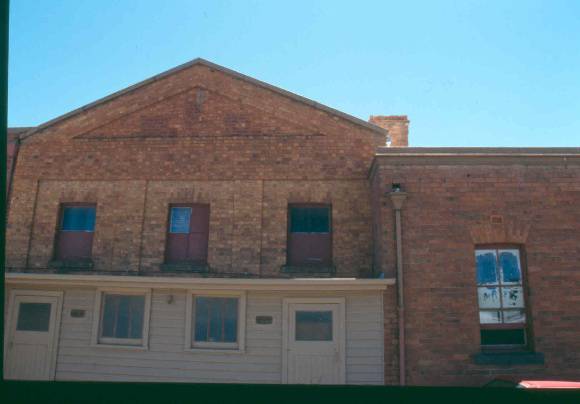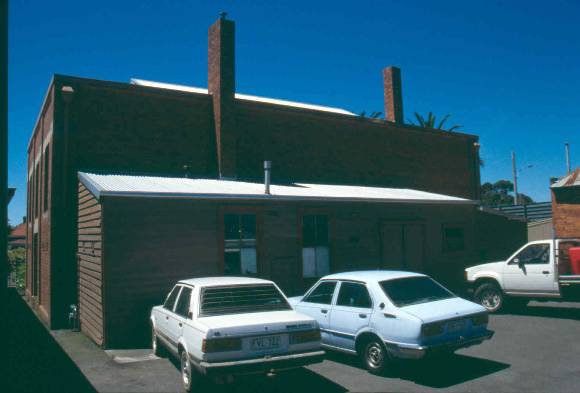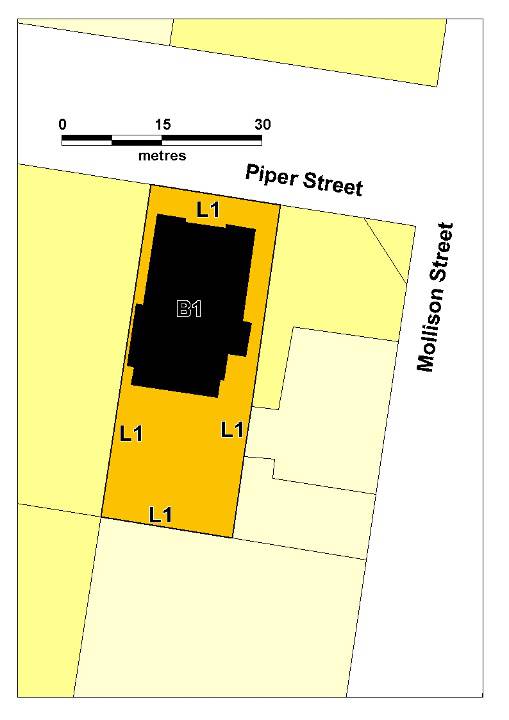| Back to search results » | Back to search page » |
|
FREEMASONS HALL, ZETLAND LODGE
Location3 PIPER STREET KYNETON, MACEDON RANGES SHIRE
File NumberHER/2002/000001 (1)LevelRegistered |
|
Statement of Significance
What is significant?
The first Freemasons Lodge in Kyneton, the 'Zetland Lodge', was inaugurated as an group in 1859. From 1866 until 1890 the lodge rented the Manchester Unity (MUIOOF) Hall at 3 Piper Street (built in 1866) for its meetings. In 1904 the Freemasons purchased this hall and in 1905 built a series of new brick rooms to the street. Various decorations and furnishings were added in subsequent years.
The front facade formed by the 1905 additions is simple and formal, but less closed off than many other Masonic buildings. Two parapeted pavilions flank the entrance verandah. The central foyer is roofed with a parapeted gable, the ridge of which intersects the transverse ridge of the original1866 hall. A rectangular panel in the entrance gable reads Freemasons Hall Zetland Lodge, with a circular panel with Masonic symbols above. The parapeted gables end of the original hall remains visible at the sides, and along with the 1905 front gable, evoke the Romanesque. The large brick supper room orhall at the rear, with concrete lintels, was added in 1927.
In keeping with the interest of Freemasons in ancient Egyptian mysteries and ritual, the interior of the Hall was decorated from the start with a strong Egyptian theme. The model for the interior was a temple form similar to that of the kiosk of the Temple of Isis at Philae, which is also the subject of one of the first of the canvases in the room. The engaged piers of the hall are painted as Egyptian style columns with papyrus flower capitals. Lintels are formed in plaster between the tops of the capitals, and the boxed beams of the ceiling are painted as part of the same scheme. Doors, blocked windows and fireplaces have architraves of Egyptian pylon form. Over a number of years a series of four canvases by local painter and art teacher Thomas Fisher Levick were fitted between the pilasters. One of the first, of the Temple of Isis, is framed in gilt beneath a semicircular arch. The other three canvases employ varying degrees of trompe-l'oeil, continuing in perspective the Egyptian temple structure as a frame for various Egyptian scenes, documentary or imagined. One canvas was altered by Levick to accommodate an Honour Roll of members involved in the 1914-18 war. The timber dais, Master's chair and canopy also feature Egyptian style design elements.
How is it significant?
The Freemasons' Hall Zetland Lodge is of aesthetic and historical significance to the State of Victoria.
Why is it significant?
The Freemasons' Hall Zetland Lodge is of aesthetic significance for the comprehensive, accomplished and intact Egyptian inspired interior of the Lodge meeting room. There is no known comparable Freemasons' hall interior in the State.
The Freemasons' Hall Zetland Lodge is of historical significance because it demonstrates the longstanding importance of Freemasonry in the life of country towns, and because it has been in continuous use since 1866 as a friendly society lodge.
The Freemasons Hall Zetland Lodge is of architectural significance because it incorporates an early and substantial masonry hall built for a benevolent society in a country town.
The Freemasons Hall Zetland Lodge is of aesthetic and historic significance for its connection with artist, designer and teacher Thomas Fisher Levick, and is his most comprehensive integrated artistic project known to exist in the state or elsewhere.
Group
Community Facilities
Category
Hall Masonic










